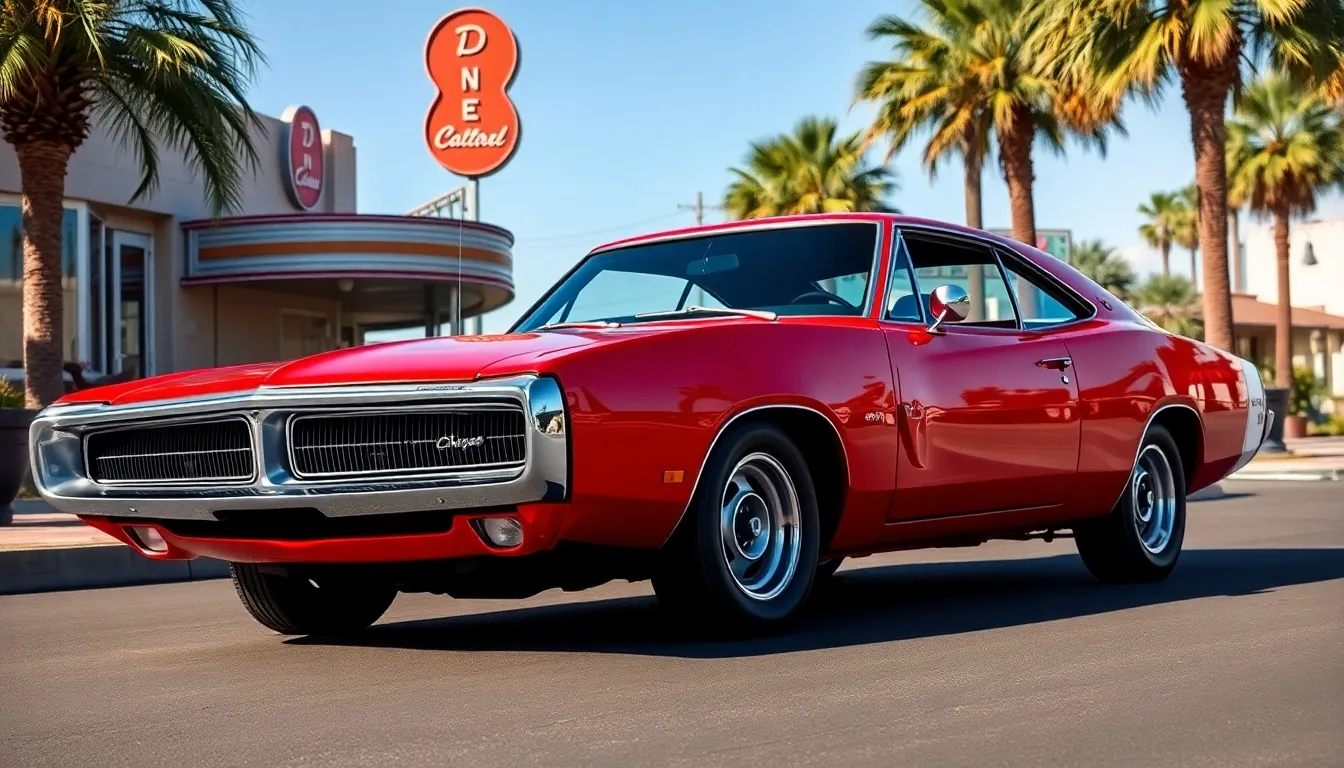When we think about pure American muscle car dominance, Mopar consistently roars to the top of every enthusiast’s dream list. From the legendary HEMI engines that made competitors tremble to the iconic Dodge Charger and Plymouth ‘Cuda that ruled both streets and dragstrips, Chrysler’s performance division created some of the most powerful and sought-after machines in automotive history.
We’ve witnessed decades of Mopar muscle cars commanding respect at car shows and breaking auction records worldwide. These aren’t just vehicles – they’re rolling monuments to an era when horsepower was king and quarter-mile times determined bragging rights. Whether it’s the thunderous 440 Six Pack or the mythical 426 HEMI, Mopar engineering pushed boundaries that other manufacturers couldn’t match.
Today’s collectors and enthusiasts continue to chase these Detroit legends with the same passion that originally drove their creation. Let’s dive deep into what makes Mopar muscle cars the ultimate expression of American automotive power.
Legendary Mopar Muscle Cars That Defined American Performance
These iconic Mopar models established the foundation for American muscle car supremacy. Each vehicle represented Chrysler’s commitment to raw power and aggressive styling that captured the hearts of performance enthusiasts.
Plymouth ‘Cuda and Barracuda
Plymouth’s Barracuda arrived in 1964 as one of the first pony cars, beating the Ford Mustang to market by 17 days. The sleek fastback design featured distinctive wraparound rear glass that became its signature styling element. We see the ‘Cuda nameplate emerge in 1970 as the high performance variant, offering buyers access to devastating engine options.
The 1970 Plymouth ‘Cuda AAR (All American Racers) packed a 340 small block engine with triple two barrel carburetors producing 290 horsepower. Racing stripes, side exhaust pipes, and aggressive hood scoops distinguished this track focused machine from regular Barracudas. Factory records show only 2,724 AAR ‘Cudas rolled off production lines, making them extremely valuable collector pieces today.
HEMI powered ‘Cudas represented the ultimate expression of Plymouth’s muscle car philosophy. The 426 HEMI V8 generated 425 horsepower and could propel the lightweight ‘Cuda from zero to 60 mph in just 5.6 seconds. Only 652 HEMI ‘Cudas left the factory in 1970, with current auction values exceeding $500,000 for pristine examples.
Dodge Challenger R/T
Dodge introduced the Challenger in 1970 as their answer to the Camaro and Mustang, but with distinctly larger proportions and more aggressive styling. The R/T (Road/Track) package delivered serious performance credentials with standard 383 cubic inch V8 power and available 440 Six Pack or 426 HEMI upgrades. We consider the Challenger’s longer wheelbase and wider stance as key advantages for high speed stability.
The 1970 Challenger T/A (Trans Am) homologation special featured a unique 340 Six Pack engine with side exit exhausts and functional hood scoop. Dodge built only 2,399 T/A Challengers to meet racing requirements, creating instant collector appeal. These cars showcased bold graphics packages, rear spoilers, and distinctive side pipe exhaust systems that announced their racing heritage.
HEMI powered Challengers delivered devastating straight line performance with quarter mile times in the low 13 second range. The 426 HEMI’s legendary reliability and power potential made it the choice for serious drag racers and street warriors. Production numbers remained low with just 356 HEMI Challengers produced in 1970, cementing their status as blue chip investment cars.
Plymouth Road Runner
Plymouth created the Road Runner in 1968 as an affordable muscle car targeting younger buyers who wanted maximum performance per dollar. The cartoon inspired nameplate and “beep beep” horn became cultural phenomena while the standard 383 V8 delivered genuine muscle car thrills. We appreciate how Plymouth stripped away luxury features to keep prices low and performance high.
The Road Runner’s sleek styling incorporated functional hood scoops, racing stripes, and minimal chrome trim that emphasized its no nonsense approach. Base models started at just $2,896 in 1968, making them accessible to average buyers seeking authentic muscle car excitement. This pricing strategy helped Plymouth sell 44,599 Road Runners in the inaugural year alone.
Factory 440 Six Pack Road Runners elevated performance with three two barrel carburetors feeding the 440 cubic inch V8 for 390 horsepower output. The rare HEMI option transformed the Road Runner into a 13 second quarter mile machine capable of embarrassing more expensive competitors. Modern collectors actively pursue original Road Runners, with pristine HEMI examples commanding six figure prices at major auctions.
Dodge Charger R/T
Dodge redesigned the Charger for 1968 with flowing “Coke bottle” proportions that created one of the most recognizable muscle car silhouettes ever produced. The R/T package included a standard 440 Magnum V8 generating 375 horsepower along with heavy duty suspension and performance tires. We recognize the second generation Charger as Dodge’s design masterpiece that perfectly balanced aggressive styling with aerodynamic efficiency.
The 1968 Charger R/T could accelerate from zero to 60 mph in 6.5 seconds with the 440 engine or achieve 13.5 second quarter mile times with the optional 426 HEMI. Dodge’s engineers optimized the Charger’s aerodynamics for high speed stability, making it equally capable on highways and drag strips. Racing versions dominated NASCAR competition with drivers like Richard Petty achieving multiple victories.
HEMI powered Charger R/T models represented the pinnacle of Dodge’s muscle car development with 425 horsepower on tap from the legendary 426 engine. These cars featured distinctive “HEMI” hood callouts, heavy duty drivetrains, and suspension components designed to handle massive torque output. Current market values for original HEMI Chargers often exceed $200,000, reflecting their status as ultimate American muscle machines.
Revolutionary Engines That Powered Mopar Muscle Cars
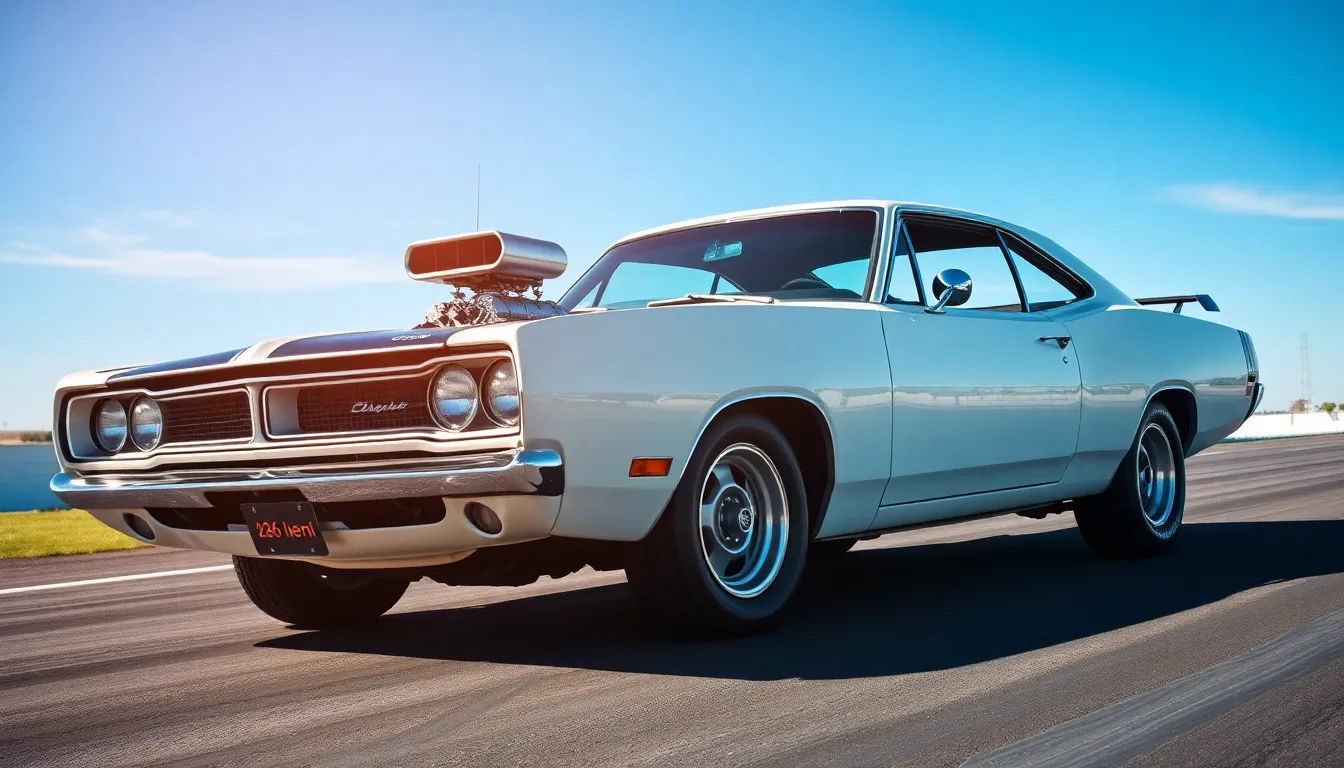
Mopar’s legendary status in American muscle car history stems directly from the powerplants that roared under their hoods. These revolutionary engines transformed ordinary vehicles into street legends that dominated drag strips and highways alike.
426 Hemi V8 Engine
The 426 Hemi stands as the crown jewel of Mopar performance engines. Racing heritage defines this powerhouse, which first appeared in 1964 as a track-only competition motor before becoming available for street cars in 1966. Engineers designed the hemispherical combustion chambers to maximize airflow and compression, resulting in unprecedented power output for its era.
Street versions produced an advertised 425 horsepower and 490 lb-ft of torque. Conservative factory ratings likely understated the true output, with many examples dyno testing closer to 500 horsepower. Performance figures spoke volumes about the engine’s capabilities, launching vehicles like the Plymouth ‘Cuda and Dodge Charger from 0-60 mph in under 5 seconds.
Production numbers remained deliberately limited due to high manufacturing costs. Only 11,000 street Hemi engines rolled off assembly lines between 1966 and 1971, making them among the rarest powerplants of the muscle car era. Collectors today pay premium prices for original Hemi-equipped vehicles, often exceeding $200,000 at auction.
440 Six Pack V8
The 440 Six Pack emerged as Mopar’s high-performance big block alternative to the expensive Hemi. Engineers equipped this 440 cubic inch V8 with three Holley two-barrel carburetors, creating a distinctive induction system that became synonymous with Mopar muscle. Production began in 1969, targeting buyers who wanted serious performance without Hemi pricing.
Power output reached an advertised 390 horsepower and 490 lb-ft of torque. Real industry testing often revealed higher numbers, with the triple carburetor setup providing exceptional throttle response and mid-range acceleration. Quarter-mile times consistently dropped into the low 13-second range for properly equipped vehicles.
Availability extended across multiple Mopar muscle car lines. Plymouth offered the Six Pack in the Road Runner and ‘Cuda, while Dodge installed it in the Challenger R/T and Super Bee. Visual identification came easy thanks to the distinctive “440 SIX PACK” decals and functional hood scoops that fed air to the hungry carburetors.
383 Magnum V8
The 383 Magnum served as Mopar’s mainstream muscle car engine throughout the late 1960s. Displacement of 383 cubic inches provided substantial torque while maintaining reasonable production costs, making it accessible to younger buyers entering the muscle car market. Engineers based the design on Chrysler’s proven B-block architecture, ensuring reliability alongside performance.
Factory ratings claimed 335 horsepower and 425 lb-ft of torque in high-performance trim. Single four-barrel carburetor induction kept things simple while delivering strong acceleration across the rpm range. Performance testing showed consistent quarter-mile times in the mid-14-second range, respectable for the era’s intermediate-sized vehicles.
Production volumes far exceeded the limited-run Hemi and Six Pack engines. Thousands of Dodge Chargers, Plymouth Road Runners, and other Mopar muscle cars received 383 Magnum power, creating a substantial enthusiast base that continues today. Restoration parts remain readily available, making these engines popular choices for classic car rebuilds.
340 Small Block V8
The 340 Small Block represents Mopar’s answer to Chevrolet’s 327 and Ford’s 289 high-revving engines. Engineers designed this compact powerplant specifically for lighter A-body vehicles like the Plymouth Duster and Dodge Dart, where weight distribution and handling mattered as much as straight-line performance. Production spanned from 1968 to 1973, covering the peak muscle car years.
Output figures reached 275 horsepower and 340 lb-ft of torque in standard form. High-performance versions with upgraded camshafts and compression ratios pushed power closer to 290 horsepower. Rev-happy characteristics allowed sustained high-rpm operation, making these engines favorites among road racers and autocross competitors.
Weight advantages gave 340-powered vehicles exceptional power-to-weight ratios. Plymouth Dusters equipped with 340 engines often outperformed heavier big-block cars in both acceleration and handling scenarios. Modern engine builders continue to develop 340 Small Blocks for racing applications, proving the basic design’s enduring potential.
Most Collectible Mopar Muscle Cars Among Enthusiasts Today

Collectors today recognize these four Mopar models as the pinnacle of investment value and historical significance. Each represents the absolute peak of American muscle car engineering and rarity.
1970 Plymouth Hemi ‘Cuda
Auction values consistently exceed $2 million for pristine examples of the 1970 Plymouth Hemi ‘Cuda, making it the most coveted Mopar among serious collectors. Only 652 Hemi ‘Cudas rolled off production lines in 1970, creating an extreme scarcity that drives astronomical prices today.
Buyers specifically seek convertible models, with just 14 Hemi ‘Cuda convertibles ever manufactured. Barrett-Jackson auction records show these ultra-rare convertibles commanding between $3.5 to $4.5 million when they appear at major sales events.
Collectors prize original matching numbers examples above all else, particularly those retaining factory colors like In-Violet, Plum Crazy Purple, and Lime Light Green. Documentation becomes critical for authenticity verification, as reproduction parts and tribute builds flood the market.
1969 Dodge Charger Daytona
NASCAR homologation requirements produced exactly 503 Charger Daytonas in 1969, creating one of the rarest production muscle cars ever built. We find these aerodynamic warriors selling for $400,000 to $900,000 depending on engine configuration and restoration quality.
Hemi powered Daytonas represent the ultimate prize, with only 70 factory Hemi examples leaving the assembly line. These racing inspired vehicles feature the distinctive 23-inch tall rear wing and 18-inch nose cone that made them dominant on superspeedways.
Factory color combinations significantly impact values, with high impact colors like Bright Red, Go Mango Orange, and Plum Crazy Purple commanding premium prices. Collectors specifically hunt for survivor cars that retain original paint, interior, and drivetrain components without major modifications.
1970 Dodge Challenger T/A
Trans Am racing homologation created the limited production Challenger T/A with only 2,399 units manufactured during its single year run. Current market values range from $85,000 to $200,000 based on condition and documentation completeness.
Factory equipment included the 340 Six Pack engine, distinctive side exhaust pipes, and aggressive hood treatment with functional air scoops. Collectors appreciate the T/A’s racing pedigree and unique visual elements that separate it from standard Challenger models.
Original paint survivor examples bring top dollar, especially those finished in high impact colors paired with the optional elastomeric front and rear bumpers. Numbers matching drivetrain components and original broadcast sheets dramatically increase collectibility and market value.
1968 Dodge Super Bee
Budget conscious muscle car buyers originally gravitated toward the Super Bee for its combination of 383 Magnum power and affordable pricing, making it highly collectible today. Production totaled 7,842 units in its debut year, establishing reasonable availability compared to ultra-rare contemporaries.
Hemi powered Super Bees command the highest prices, with these rare variants reaching $150,000 to $300,000 at major auctions. Standard 383 Magnum examples typically trade between $40,000 to $80,000 depending on restoration quality and originality.
Collectors specifically seek A12 440 Six Pack cars from 1969 production, which featured the high performance engine package and distinctive blackout hood treatment. Original window stickers, build sheets, and factory documentation significantly enhance desirability among serious Mopar enthusiasts.
Performance Features That Made Mopar Muscle Cars Dominant
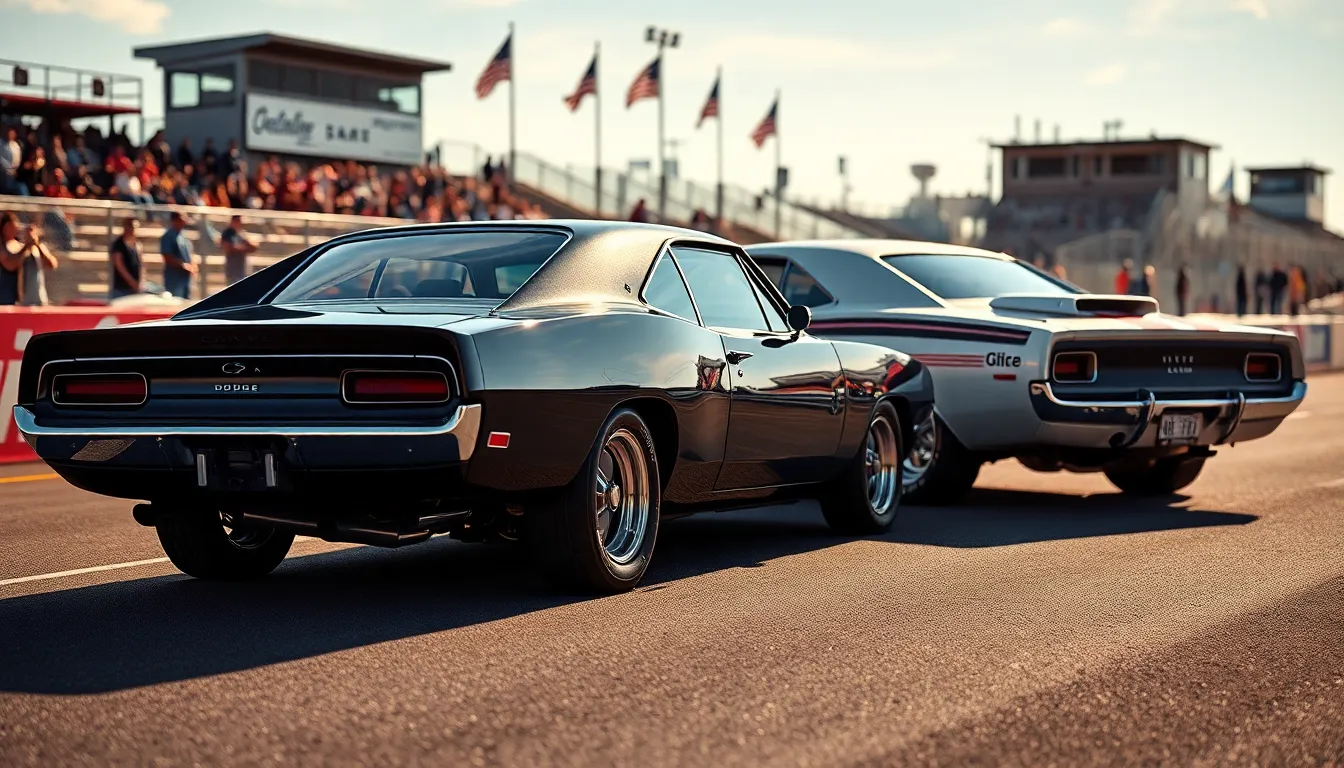
Beyond the legendary engines that powered these machines, we find that Mopar’s engineering excellence extended to every performance aspect of their muscle cars. Engineering innovations in suspension, transmission, aerodynamics, and exhaust systems created the complete package that dominated American roads and racetracks.
Advanced Suspension Systems
Torsion bar front suspension became Mopar’s signature handling advantage over competitors using conventional coil springs. We see this system delivering superior weight distribution and improved cornering stability in models like the Plymouth ‘Cuda and Dodge Challenger. Heavy duty leaf springs in the rear complemented the front torsion bars, providing exceptional traction during high performance launches.
Competition inspired upgrades included the firm ride package available on performance models, featuring upgraded shock absorbers and stiffer suspension tuning. Performance oriented buyers could specify the handling package on Charger R/T and Road Runner models, which included front and rear sway bars for reduced body roll. Track tested components from Mopar’s racing programs filtered down to street cars, giving enthusiasts authentic performance hardware.
High Performance Transmissions
Manual transmission options dominated Mopar muscle car lineups, with the heavy duty A833 4-speed becoming the preferred choice for serious performance enthusiasts. We recognize this transmission’s strength in handling the massive torque outputs from 426 Hemi and 440 Six Pack engines without failure. Close ratio gearing provided optimal acceleration through each gear, while the wide ratio option delivered better highway cruising capability.
TorqueFlite automatic transmission served customers wanting convenience without sacrificing too much performance, particularly the 727 unit behind big block engines. Performance calibration on these automatics included firmer shift points and modified valve bodies for quicker gear changes. Competition proven components like heavy duty clutches and reinforced cases ensured reliability under extreme conditions.
Aerodynamic Body Designs
Streamlined body modifications reached their peak with the 1969 Dodge Charger Daytona, featuring a distinctive nose cone and massive rear wing that reduced drag at high speeds. We observe how this aerodynamic package enabled NASCAR dominance, with speeds exceeding 200 mph on superspeedways. Production requirements for racing homologation brought these advanced aerodynamic features to street versions, creating some of the most distinctive muscle cars ever built.
Functional air scoops and vents appeared throughout the Mopar lineup, channeling cool air to engines and improving high speed stability. Design elements like the Challenger’s split grille and ‘Cuda’s aggressive front spoiler combined form with function, reducing front end lift at highway speeds. Wind tunnel testing influenced body shapes across multiple models, giving Mopar muscle cars a competitive advantage in both racing and street performance.
Racing Inspired Exhaust Systems
Dual exhaust systems came standard on most Mopar performance models, featuring large diameter tubing and performance oriented mufflers that enhanced both sound and flow. We find that the distinctive rumble of a Mopar V8 resulted from carefully tuned exhaust pulses and resonator placement throughout the system. Chrome tipped exhaust pipes added visual appeal while signaling the performance potential underneath.
Performance exhaust packages included options like the “Super Stock” system on certain models, featuring minimal restrictions and maximum flow capacity. Competition derived header designs appeared on special models like the Plymouth AAR ‘Cuda and Dodge Challenger T/A, providing optimal exhaust scavenging for their high revving engines. Sound engineering created the aggressive exhaust note that became synonymous with Mopar muscle cars, distinguishing them from competitors on the street.
Iconic Design Elements of Classic Mopar Muscle Cars
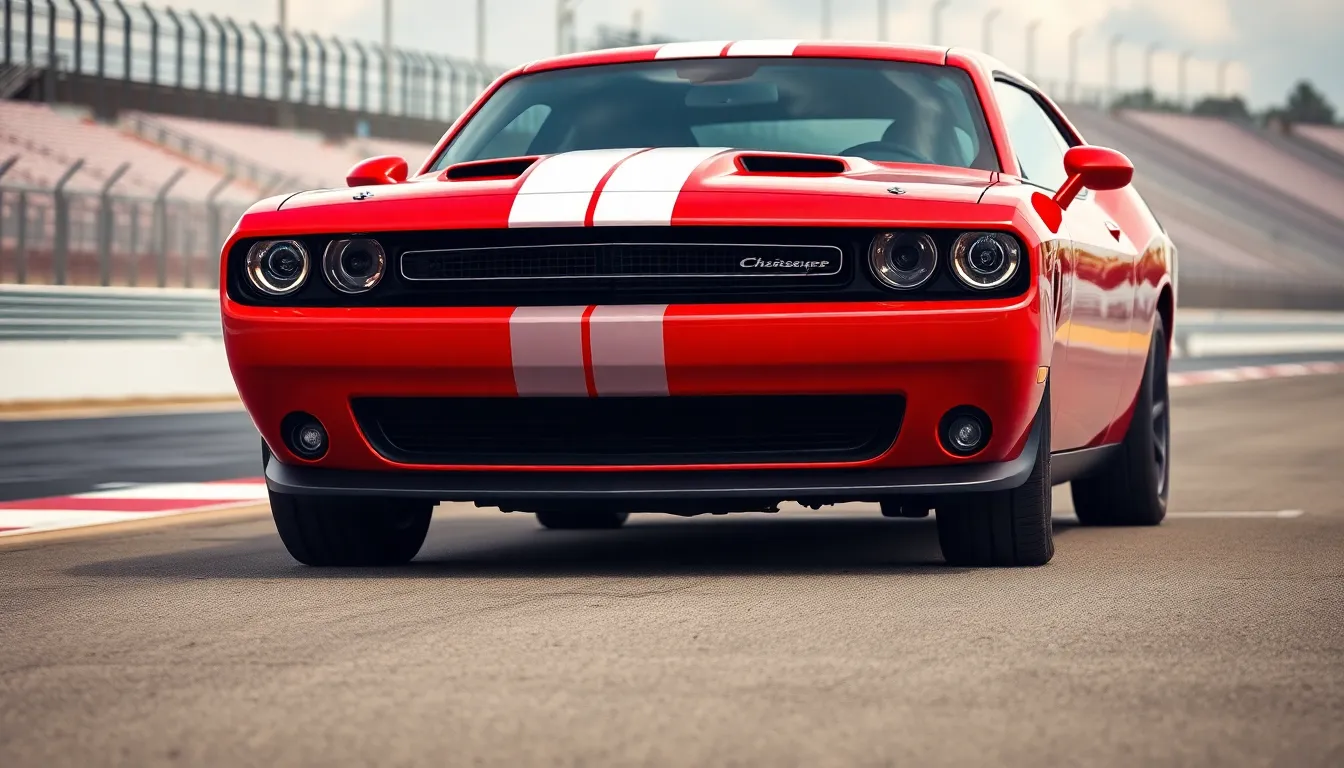
Mopar muscle cars transformed American automotive design through bold visual statements that matched their legendary performance capabilities. These design elements became defining characteristics that enthusiasts instantly recognize today.
Aggressive Hood Scoops and Air Intakes
Functional hood scoops dominated the aesthetic industry of classic Mopar muscle cars like the Plymouth ‘Cuda and Dodge Challenger. We see how the 1970 Plymouth AAR ‘Cuda featured a prominent center-mounted scoop that channeled cool air directly into the carburetor. Ramcharger hood scoops on models like the 1968 Dodge Charger R/T created an intimidating profile while improving engine breathing.
Air intake designs varied across different model years and performance packages. The 1969 Plymouth Road Runner incorporated subtle yet effective hood vents that enhanced both cooling and visual appeal. Shaker hood scoops moved with the engine on certain HEMI-powered models, creating a ever-changing connection between form and function that became legendary among muscle car enthusiasts.
Bold Racing Stripes and Graphics
Racing stripes transformed ordinary Mopar models into visual performance statements that commanded attention on streets and drag strips. We find that the classic “bumblebee stripe” became synonymous with Dodge Super Bee models, wrapping around the rear deck in contrasting colors. Plymouth Road Runner models featured distinctive side stripes that emphasized the car’s length and sporting intentions.
Graphics packages extended beyond simple stripes to include model-exact decals and performance callouts. The 1970 Dodge Challenger T/A showcased side exhaust graphics that highlighted its Trans Am racing heritage. Reflective tape stripes on models like the 1969 Dodge Charger Daytona created additional visual impact while serving aerodynamic testing purposes.
Distinctive Grille Designs
Grille designs became signature elements that distinguished each Mopar muscle car model from its competitors and siblings. We observe how the 1970 Plymouth ‘Cuda featured a unique split grille design with four headlights that created an aggressive face unlike any other muscle car. Dodge Challenger models utilized a singular large grille opening framed by dual headlights that emphasized width and power.
Hidden headlight mechanisms added mystery and clean lines to certain models during this era. The 1969 Dodge Charger incorporated rotating headlight doors that created a smooth nose when closed and revealed dual headlights when opened. Plymouth Barracuda models evolved from simple horizontal bars to complex honeycomb patterns that improved airflow while creating distinctive brand identity.
Muscular Body Lines and Proportions
Body proportions defined the classic muscle car stance through long hoods, short decks, and wide aggressive stances. We recognize how the 1970 Plymouth ‘Cuda achieved perfect proportional balance with its elongated hood accommodating large displacement engines and compact passenger compartment. Dodge Charger models featured flowing fastback profiles that created aerodynamic advantages while maintaining muscular visual presence.
Fender flares and body sculpting enhanced the perception of power and performance across Mopar’s muscle car lineup. The 1970 Dodge Challenger incorporated subtle hip lines that flowed from front to rear, creating visual movement even when stationary. Plymouth Road Runner models utilized clean, uncluttered surfaces punctuated by functional air extractors and performance-oriented details that reinforced their purpose-built nature.
Racing Heritage of Mopar Muscle Cars in Professional Motorsports
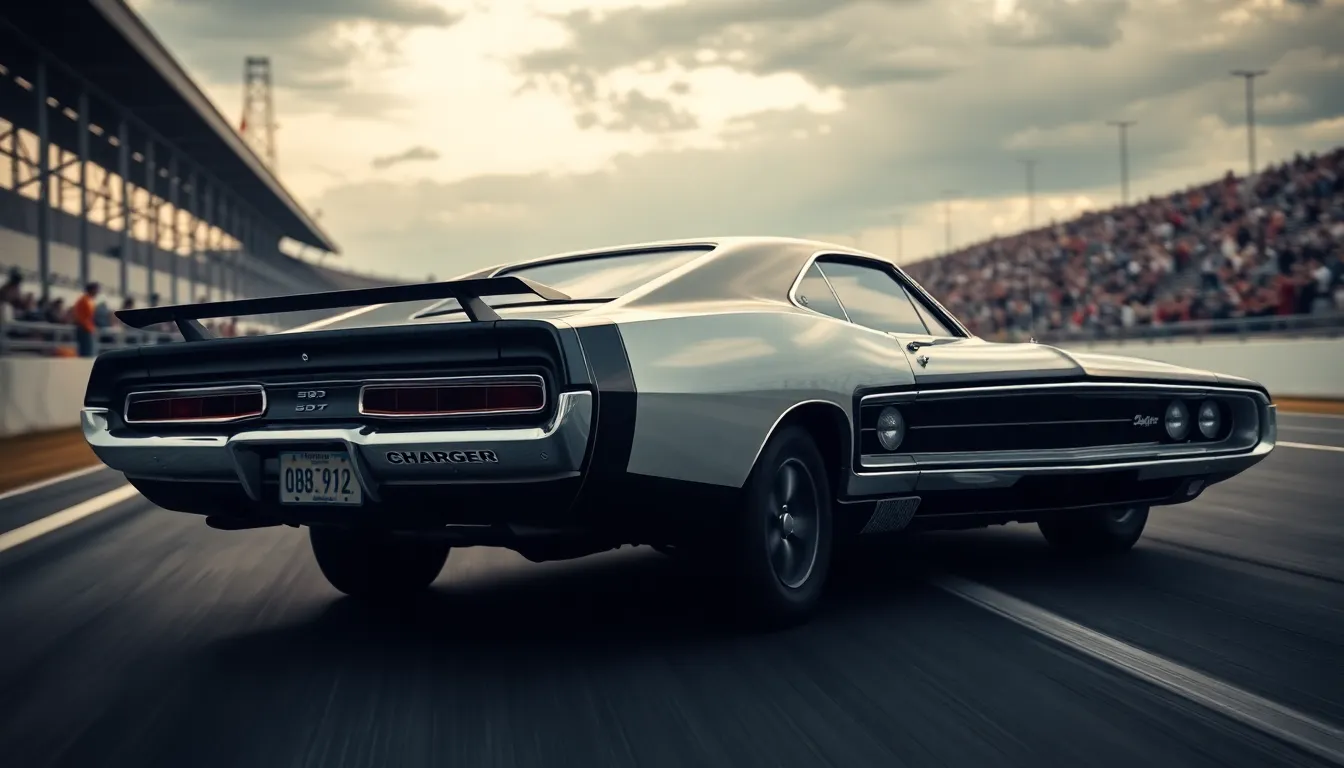
Mopar’s engineering prowess extended far beyond street performance, establishing legendary victories across professional motorsports that cemented their reputation as true racing champions.
NASCAR Dominance in the Late 1960s
Aerodynamic supremacy defined Mopar’s NASCAR success when the 1969 Dodge Charger Daytona and 1970 Plymouth Superbird dominated superspeedway racing. Winning became routine for these winged warriors, capturing 38 of 48 NASCAR races in 1970 alone. Bobby Isaac piloted his Dodge Charger Daytona to the 1970 NASCAR Cup Series championship, while Buddy Baker set a closed-course speed record of 200.447 mph at Talladega Speedway in a Dodge Charger Daytona.
Engine technology proved decisive as Mopar’s 426 Hemi V8 delivered unmatched power on NASCAR’s biggest stages. Richard Petty’s Plymouth Road Runner secured multiple victories throughout the late 1960s, showcasing the legendary Hemi’s racing capabilities. Track records fell regularly as Mopar drivers consistently posted the fastest qualifying times at Daytona and Talladega.
NHRA Drag Racing Championships
Professional drag racing saw Mopar dominate multiple categories with purpose-built racing machines powered by specialized Hemi engines. Don Garlits achieved many Top Fuel championships behind the wheel of Hemi-powered dragsters throughout the 1960s and 1970s. Factory Experimental classes witnessed Plymouth ‘Cuda and Dodge Challenger drivers claiming consecutive NHRA championships.
Quarter-mile supremacy became synonymous with Mopar when drivers like “Big Daddy” Don Garlits consistently ran sub-7-second elapsed times. Funny Car competitions featured Mopar entries winning multiple national events each season, establishing the brand’s drag racing legacy. Super Stock eliminator categories regularly crowned Mopar champions driving modified street cars with racing preparation.
Trans-Am Racing Success
Road racing excellence emerged when Mopar entered the SCCA Trans-Am Championship with specially prepared Plymouth ‘Cuda and Dodge Challenger T/A models. Dan Gurney piloted his Plymouth ‘Cuda to multiple Trans-Am victories in 1970, demonstrating Mopar’s road racing capabilities. Swede Savage secured additional wins driving his Dodge Challenger T/A, proving these muscle cars could handle road courses as effectively as drag strips.
Racing development transferred directly to street versions as Trans-Am competition led to the creation of the legendary Plymouth AAR ‘Cuda and Dodge Challenger T/A. Factory support included specialized suspension tuning and aerodynamic modifications that enhanced cornering performance. Competition success validated Mopar’s engineering approach, with Trans-Am victories directly influencing production muscle car development.
Plymouth and Dodge Factory Racing Programs
Corporate commitment to motorsports reached unprecedented levels when Chrysler established comprehensive factory racing support for both Plymouth and Dodge divisions. Racing development budgets exceeded $10 million annually during peak muscle car years, funding everything from engine research to aerodynamic testing. Factory teams received direct engineering support, ensuring competitive advantages in multiple racing series.
Technical innovation flowed from racing programs back to production vehicles, with lessons learned on tracks improving street car performance. Competition departments developed specialized parts like aluminum intake manifolds and lightweight body panels exclusively for racing applications. Dealer networks supported grassroots racing efforts through performance parts programs, making racing components available to privateer teams nationwide.
Investment Value of Restored Mopar Muscle Cars
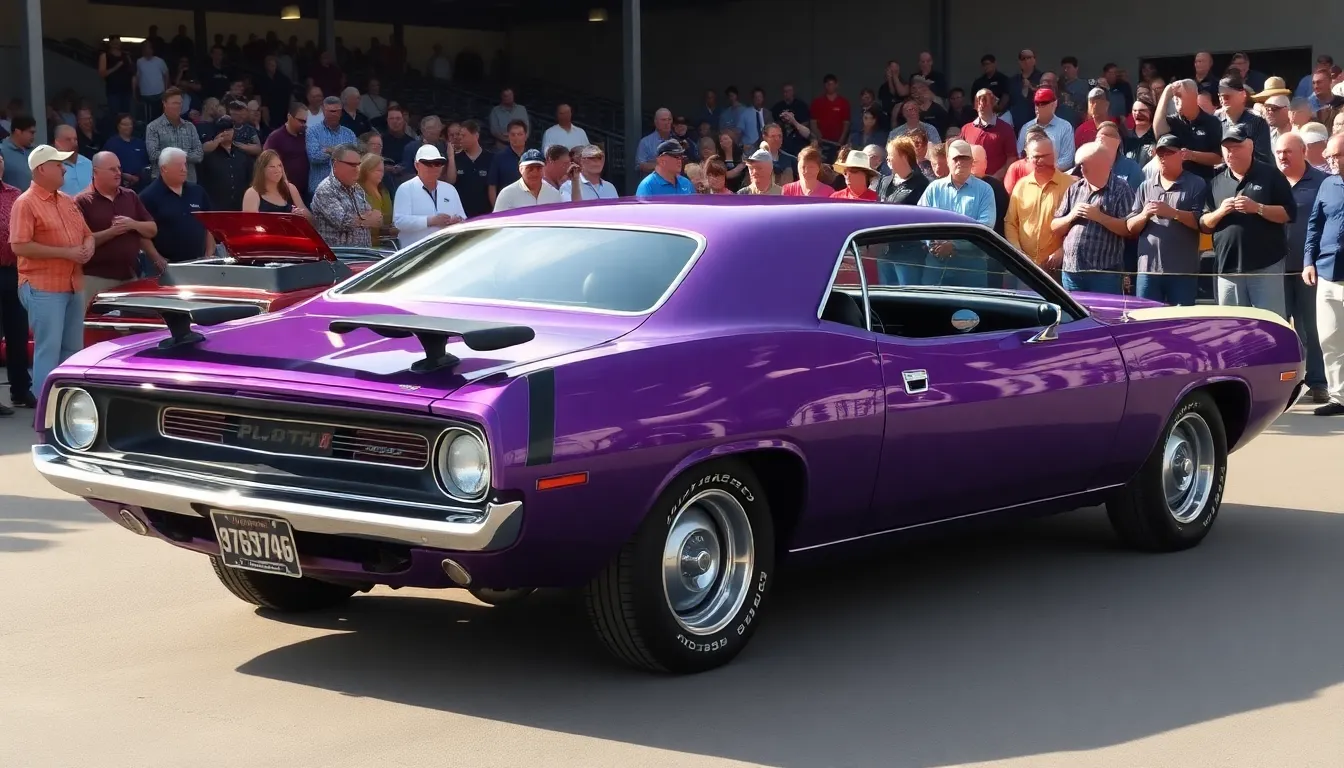
We’ve witnessed these legendary muscle cars transform from depreciating used vehicles into some of the most valuable collector automobiles in today’s market.
Market Trends for Classic Mopar Models
Auction prices for restored Mopar muscle cars have increased dramatically over the past two decades. Barrett-Jackson and Mecum auctions regularly showcase pristine examples commanding six-figure prices, with some rare models exceeding $1 million at hammer fall. Numbers matching 1970 Plymouth Hemi ‘Cuda convertibles have sold for $4.8 million, setting records for American muscle cars at public auction.
Collector interest continues to drive demand across all price segments. Entry level models like 340 Small Block powered Challengers and ‘Cudas provide affordable access points for new collectors, typically ranging from $35,000 to $65,000 for quality restorations. Mid-tier models equipped with 383 Magnum and 440 Six Pack engines command $75,000 to $150,000 depending on rarity and condition.
Regional market variations affect pricing significantly across different geographic areas. California and Florida markets typically show premium pricing due to higher collector concentrations, while Midwest markets often offer better value opportunities. Arizona auction week in January sets pricing benchmarks that influence private party transactions throughout the year.
Factors Affecting Mopar Muscle Car Values
Engine originality remains the single most important value determinant for collectors. Numbers matching 426 Hemi V8 engines can add $50,000 to $100,000 to a vehicle’s value compared to non-original powerplants. Date coded components including carburetors, intake manifolds, and exhaust manifolds significantly impact authenticity verification.
Production numbers directly influence current market values across all Mopar models. Limited production vehicles like the 1969 Dodge Charger Daytona with only 503 units manufactured command premium prices regardless of condition. High production models such as base Challengers require exceptional documentation and restoration quality to achieve top dollar pricing.
Color combinations and option packages create substantial value differences between similar vehicles. High Impact colors like Plum Crazy Purple, In-Violet, and Sublime Green can add $10,000 to $25,000 to a car’s value. Factory performance options such as the Shaker hood scoop, Dana 60 rear axle, and A833 4-speed transmission increase desirability among serious collectors.
Restoration quality and professional workmanship determine long-term investment potential. Concours level restorations using correct parts and finishes maintain value better than driver quality rebuilds. We’ve observed that amateur restorations often require complete redoing, making professional work a crucial investment consideration.
Most Appreciating Models Over Time
1970 Plymouth Hemi ‘Cuda models have shown the strongest appreciation rates over the past fifteen years. Values have increased from $150,000 in 2008 to current levels exceeding $500,000 for excellent examples. Convertible versions with 426 Hemi engines represent the absolute pinnacle of Mopar muscle car collecting.
1969 Dodge Charger Daytona values have tripled since 2010 due to racing heritage recognition. These aerodynamic warriors now command $350,000 to $750,000 depending on documentation and originality. Factory racing provenance and NASCAR history documentation can add substantial premiums to already impressive base values.
1970 Dodge Challenger T/A models continue gaining collector recognition for their Trans-Am racing connections. Values have steadily climbed from $75,000 in 2015 to current levels approaching $200,000 for pristine examples. Limited production of 2,399 units and distinctive side exhaust systems make these cars increasingly desirable.
1968 Dodge Super Bee 426 Hemi examples represent emerging appreciation opportunities. Current values ranging from $125,000 to $250,000 remain below comparable Plymouth models, suggesting future growth potential. We expect these undervalued Hemi cars to experience important price increases as collectors recognize their rarity.
Authentication and Documentation Importance
Build sheets and factory documentation provide essential authenticity verification for serious collectors. Original dealer invoices, owner manuals, and warranty cards can add $5,000 to $15,000 to a vehicle’s value. Chrysler Historical Services documentation confirms original specifications and helps authenticate numbers matching components.
Date coding verification ensures component authenticity across all major systems. Correct casting dates on engine blocks, transmission cases, and rear axle housings prove originality to knowledgeable buyers. We recommend professional authentication services for high-value transactions to avoid costly mistakes.
Provenance and ownership history create compelling stories that enhance collector appeal. Celebrity ownership, racing history, or magazine feature documentation adds important value beyond mechanical specifications. Barn find discoveries with documented storage history often command premium prices due to their romantic appeal among enthusiasts.
Professional appraisals protect investment value and help insurance coverage for restored vehicles. Certified appraisers familiar with Mopar specifics ensure accurate valuations for insurance and estate planning purposes. Updated appraisals every three to five years track appreciation and maintain appropriate coverage levels.
Conclusion
We’ve explored the incredible journey of Mopar muscle cars and their undeniable impact on American automotive culture. These legendary machines continue to capture hearts with their raw power distinctive design and rich racing heritage.
The investment potential of these classics remains strong as collectors recognize their historical significance and engineering excellence. Whether you’re drawn to the thunderous roar of a 426 Hemi or the aggressive styling of a Plymouth ‘Cuda these vehicles represent the pinnacle of American performance.
Mopar’s legacy lives on through dedicated enthusiasts who preserve these automotive treasures for future generations. We’re witnessing more than just car collecting – we’re celebrating an era when horsepower ruled the streets and innovation drove the industry forward.
Frequently Asked Questions
What makes Mopar muscle cars so legendary?
Mopar muscle cars are legendary due to their powerful HEMI engines, iconic designs, and dominant performance in American automotive history. Models like the Dodge Charger and Plymouth ‘Cuda became symbols of raw horsepower and performance, establishing Mopar’s reputation as a leader in the muscle car era with their commitment to speed and power.
Which Mopar engines were most influential in muscle car history?
The most influential Mopar engines include the 426 Hemi V8, known for its revolutionary power; the 440 Six Pack V8 for its torque; the 383 Magnum V8 for balanced performance; and the 340 Small Block V8 for its high-revving capabilities. Each engine contributed uniquely to Mopar’s muscle car legacy and performance reputation.
What are the most collectible Mopar muscle cars today?
The most collectible Mopar muscle cars include the 1970 Plymouth Hemi ‘Cuda, 1969 Dodge Charger Daytona, 1970 Dodge Challenger T/A, and 1968 Dodge Super Bee. Their value is determined by factors like original paint, proper documentation, factory specifications, and overall condition, making them highly sought-after by collectors.
What performance features made Mopar muscle cars superior?
Mopar muscle cars featured advanced torsion bar front suspension, heavy-duty A833 4-speed manual transmissions, aerodynamic body designs, and performance exhaust systems. These innovations provided superior handling, acceleration, and high-speed performance, while dual exhaust systems created the distinctive sound that defined Mopar’s racing-inspired engineering excellence.
How successful was Mopar in professional racing?
Mopar dominated professional racing, particularly NASCAR, where they won 38 of 48 races in 1970 with models like the Dodge Charger Daytona and Plymouth Superbird. Their 426 Hemi V8 engines also powered multiple drag racing championships, and models like the ‘Cuda and Challenger T/A proved successful in SCCA Trans-Am road racing.
Are Mopar muscle cars good investment opportunities?
Yes, restored Mopar muscle cars have become excellent investments, with rare models fetching over $1 million at auctions. Market value depends on engine originality, production numbers, color combinations, and documentation. Models like the 1970 Plymouth Hemi ‘Cuda and 1969 Dodge Charger Daytona continue appreciating, making them attractive collector investments.
What design elements defined classic Mopar muscle cars?
Classic Mopar muscle cars featured aggressive hood scoops, racing stripes like the “bumblebee stripe,” distinctive split grilles, and muscular body lines with long hoods and wide stances. These bold visual elements, combined with functional air intakes and aerodynamic enhancements, created the iconic Mopar identity that complemented their legendary performance capabilities.

